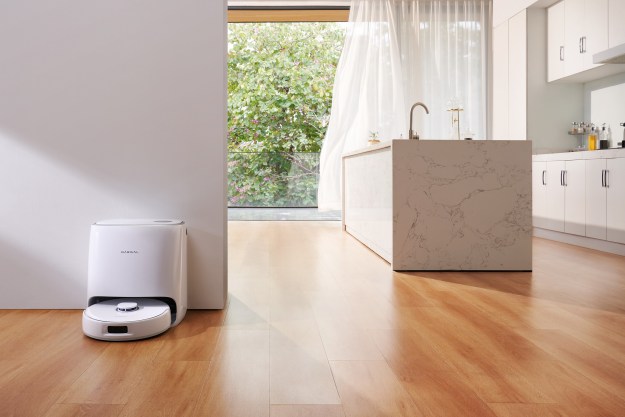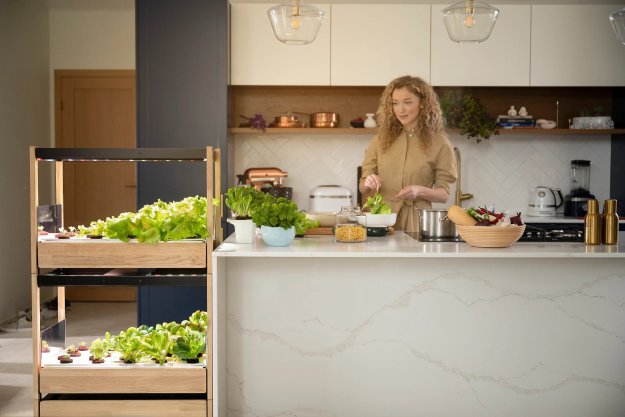
“The Click & Grow 25's modularity separates it from similar systems on the market and allows users to expand their setup as they need, but the high price is prohibitive.”
- Modular units that can expand
- Weekly harvests
- Automated watering & lighting
- Wide variety of plant options
- Expensive
- Difficult to assemble
The size, shape, and number of smart gardens has exploded over the past year. There are so many varieties and options that it can be hard to nail them all down, especially when most of the systems offer similar services.
I sat down with the Click & Grow 25, a modular system that can handle up to 75 plants in total if you have a stack of three units (I only had one). It’s a relatively hands-off system that requires minimal maintenance after you finish setting it up.
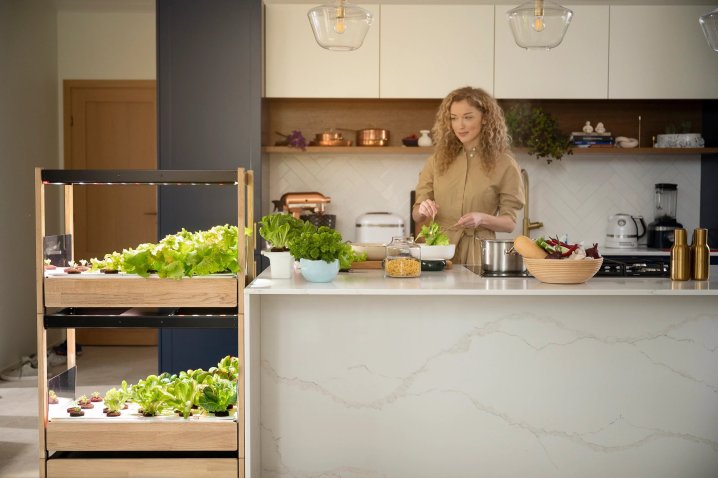
Trust me when I say that is a good thing. It also uses a different method for watering the plants than any other smart garden I’ve used in the past, and it provides easy accessibility to the plants. While it’s still far beyond the impulse buy threshold for most people at $730 (or over $2,000 if you buy three of them), the Click & Grow 25 is a solid entry point to a smart garden.
What’s in the box?
The Click & Grow 25 comes with a veritable treasure trove of different parts, including power cable clamps, stacking clamps, nuts, an L-wrench, adhesive pads for the legs, a hex wrench, M4 screws, and more. If this is beginning to sound like an IKEA system, you aren’t wrong — setup and assembly is a pain, but we’ll get to that.
The core of the system consists of the frame of the garden. It’s made up of a top and bottom piece, as well as four legs. The bottom section of the Click & Grow 25 is a drawer that slides out for easy access to the plants within. There are also individual plant trays that can be removed and swapped out. It’s useful if you want to start your growth and let it germinate before putting it into the smart garden.
Setup and assembly requires multiple cups of coffee
When I first tried to put the Click & Grow together, I found myself confused by its instructions. They aren’t the clearest or easiest to follow, though I’ve since discovered a how-to video on the company’s website.
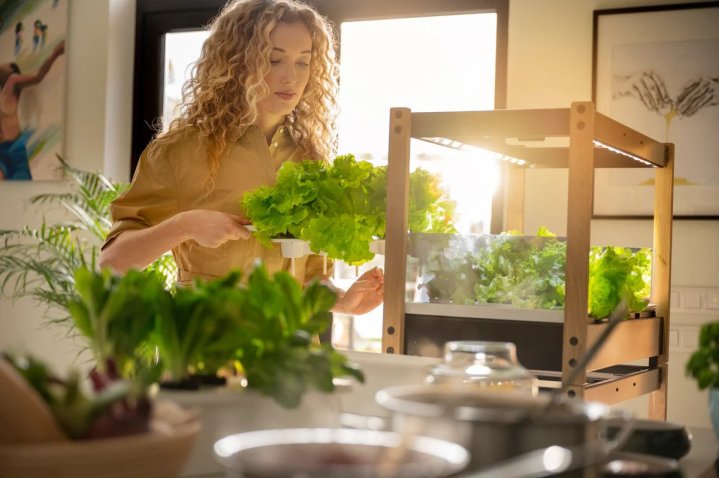
That said, I suggest being fully awake and alert you before you try to assemble this. It can be done by yourself, but it will take a bit of finagling to get the pieces in the right position. Also, many of the included parts aren’t necessary if you have only one module; the wall safety clamp, for example, is only used in a stacked unit.
The Click & Grow 25 isn’t overly difficult to assemble, but the process can be frustrating at times due to unclear instructions.
After you assemble the the Click & Grow 25, the next step is to pair it via Bluetooth to your mobile device. That’s pretty simple to do. It will then ask you to add water to the drawer; at a guess, I’d say it would hold about two gallons of water, although the specs say it maxes out at around 1.2 gallons. When I filled it, a single gallon came nowhere near the max fill line.
Adding plants is the next step. From within the app, you choose which kind of plant you want to add. You can search by name, or you can scan the QR code on the bottom of the box. The Click & Grow pods are tight bundles of soil with a seed in the center. There’s no real casing around them; just place the pod in one of the empty spaces, but make sure to add it to the app when you do.
The app notifies you when it’s time to cycle it out, lets you know what to expect from it, and more.
Click & Grow plant variety
The Click & Grow 25 has a lot of different plant variety. Mine came with multiple options, including kale, lettuce, mustard, and more. A few of the more interesting selections on their website include mizuna, rainbow chard, wild strawberries, chili peppers, and other fruits.
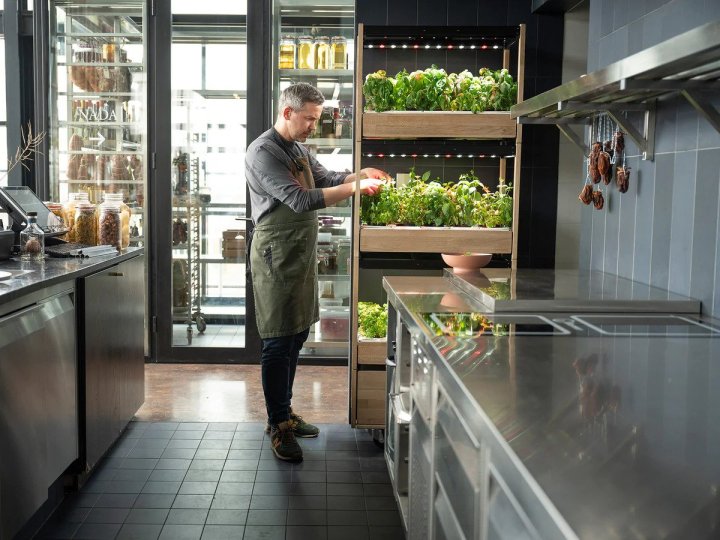
If you want, you can even grow flowers in the Click & Grow. Who says it has to be all about food? The pods can be purchased in packs of three, nine, or 54. Buying in bulk is your friend; the more you buy at once, the less expensive each individual pod will be. On average, they’re anywhere from $2.40 each and up.
Day-to-day use
The Click & Grow 25 isn’t like other smart gardens I’ve used. It doesn’t have a watering cycle that filters moisture through the plants; instead, each container is connected via a tube to the water beneath. The plants pull the liquid they need as they need it, much like a more traditional hydroponics system.
What is automatic (but can be manually controlled) is the lighting. You can choose the hours when the lights turn on and off, but the plants will need a set amount of light each day in order to thrive. Click & Grow promises a five-week rotation; in other words, you should be able to start one tray of plants one week, then another the week after that, and so on until you have a rotating cycle of plant harvests. The trays are designed to move so that you can easily pull the ready-to-harvest plants from the garden, slide the rest of the trays down, and place new growth in the original spot.
The promise of the Click & Grow 25 is weekly harvest of fresh, high quality vegetables.
There’s a Click & Grow membership that not only brings the initial purchase price down, but cuts 33% from the cost of individual plant pods. Users get to choose which greens they grow each week, and you’ll receive those in a monthly shipment. It also includes a sprouting guarantee; in other words, if the pod doesn’t sprout, Click & Grow will replace it.
Unlike other smart gardens I’ve used, the Click & Grow app didn’t infuriate me. It tells me what I need to know, and it doesn’t crash when I try to use its basic functions.
The Click & Grow positions itself in a smart way. Unlike some of its competition, it’s not completely over-the-top expensive, but it does provide more than just three or six places for plants. It’s a great choice for families that want to eat more greens but who don’t have the space for their own gardens. For someone on their own, the Click & Grow 25 would produce a reasonable amount of food — not enough to pay for its high price tag anytime soon, mind you, but enough to make you satisfied with the purchase.


